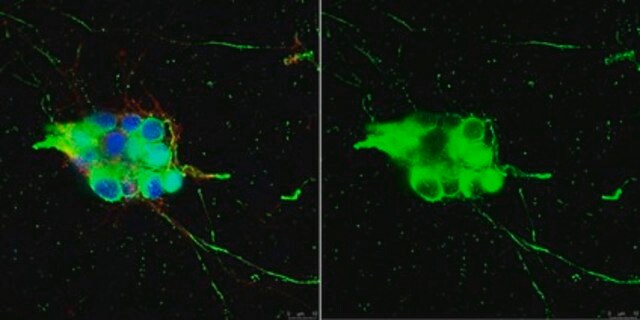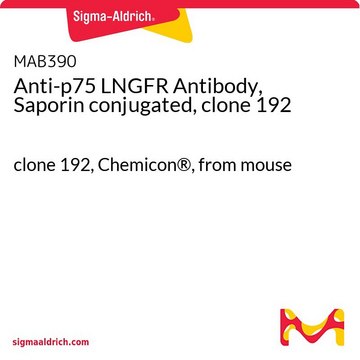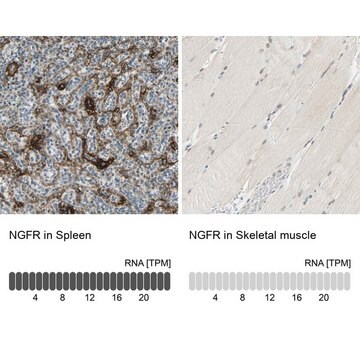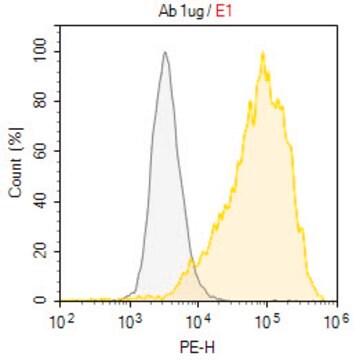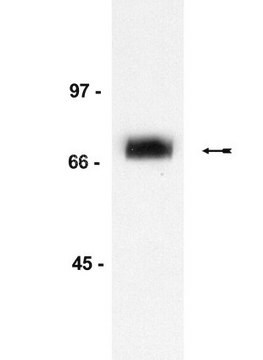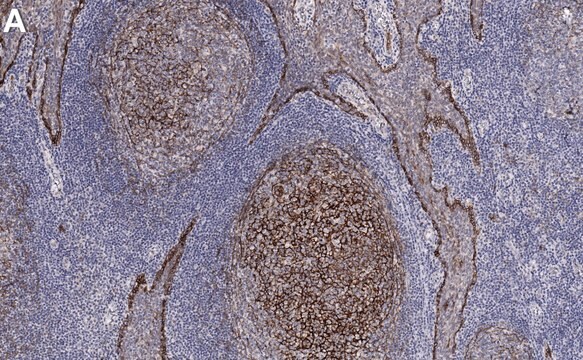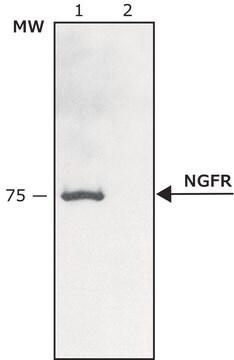N5408
Monoclonal Anti-Nerve Growth Factor Receptor (NGFR p75) antibody produced in mouse
clone ME20.4, ascites fluid
Synonyme(s) :
Anti-NGFR p75
About This Item
Produits recommandés
Source biologique
mouse
Niveau de qualité
Conjugué
unconjugated
Forme d'anticorps
ascites fluid
Type de produit anticorps
primary antibodies
Clone
ME20.4, monoclonal
Poids mol.
antigen 75 kDa
Contient
15 mM sodium azide
Espèces réactives
racoon, monkey, pig, human, feline
Ne doit pas réagir avec
mouse, chicken, rat
Technique(s)
flow cytometry: suitable
immunohistochemistry (formalin-fixed, paraffin-embedded sections): 1:1,000 using human tongue
immunohistochemistry (frozen sections): suitable
immunoprecipitation (IP): suitable
indirect ELISA: suitable
microarray: suitable
neutralization: suitable
radioimmunoassay: suitable
western blot: suitable
Isotype
IgG1
Numéro d'accès UniProt
Conditions d'expédition
dry ice
Température de stockage
−20°C
Modification post-traductionnelle de la cible
unmodified
Informations sur le gène
human ... NGFR(4804)
Description générale
Spécificité
Immunogène
Application
- for enzyme linked immune sorbent assay (ELISA)
- immunoprecipitation, immunoblotting and immunohistochemistry
- for immunocytochemistry (acetone- or formalin-fixed, Bouin′s solution - or formalin- fixed paraffin-embedded)
- for electron- microscopy radioimmunoassay (RIA) (Kd of 7x10-10 M)
- flow cytometry
- for the inhibition of binding of NGF to the receptor
- for rossette assay
- as a cholinergic immunotoxin
Actions biochimiques/physiologiques
Forme physique
Stockage et stabilité
Clause de non-responsabilité
Vous ne trouvez pas le bon produit ?
Essayez notre Outil de sélection de produits.
Produit(s) apparenté(s)
Code de la classe de stockage
10 - Combustible liquids
Classe de danger pour l'eau (WGK)
nwg
Point d'éclair (°F)
Not applicable
Point d'éclair (°C)
Not applicable
Faites votre choix parmi les versions les plus récentes :
Déjà en possession de ce produit ?
Retrouvez la documentation relative aux produits que vous avez récemment achetés dans la Bibliothèque de documents.
Notre équipe de scientifiques dispose d'une expérience dans tous les secteurs de la recherche, notamment en sciences de la vie, science des matériaux, synthèse chimique, chromatographie, analyse et dans de nombreux autres domaines..
Contacter notre Service technique
